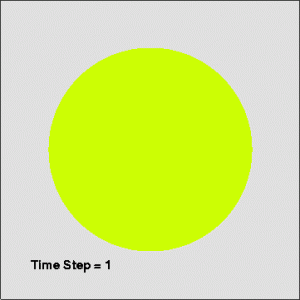Demonstration goals:
- Show the separation of fluid components during crystallization
- Understand the implications of this for Earth systems
When a fluid containing several components cools, not all of the components can form crystals at the same temperature. Instead, some will form crystals first, which generally are larger because they have had more time in which to grow. Later crystals grow from the “leftovers”, and are typically smaller.
This process is used in chemistry to refine metals via the process known as zone refining. It may also be occurring in the core of the Earth. As the core cools, crystals of pure iron are formed at the inner core/outer core boundary. Other elements, such as hydrogen, sulfur and oxygen may be left behind in the outer core fluid. Currently, we do not know if these other elements are incapable of forming crystals at the extreme temperatures and pressures within the Earth’s core, or if they will form a continuous reaction series in which later crystals incorporate more and more of the other elements as impurities. These questions are among those being investigated with the diamond anvil cell aparatus, which simulates the pressures and temperatures found deep within the Earth in an area smaller than the head of an eraser.
To re-run the animations, click here. To launch the animations as movies, click on them.
Fractional crystallization of juice
To do this experiment, you will need:
Small plastic or paper cups (3 oz {30 cc} size works well)
Enough apple juice to fill the cups (1 gallon {4.4 l} for 30 students)
Table or other flat, hard surface
Before the demonstration: About one hour before the demonstration, pour the juice into the cups, and place them into the freezer. If you place plastic wrap over the cups to prevent spillage, then you should allow extra time for the juice to freeze. You want the juice to be about half-frozen. Too little, and the sugar has not concentrated enough to be detected; too much, and you’ll have juice-on-a-stick. If you overfreeze the juice, simply set it out on the table before the lecture and pass it out at the end.
1. Give each student a cup of half-frozen juice. Ask the students if there is a taste difference between the liquid part and the ice.
For Discussion:
What does this process imply about the distribution of metals in the core of the Earth? How might this process apply to the formation of minerals in a magma body?

